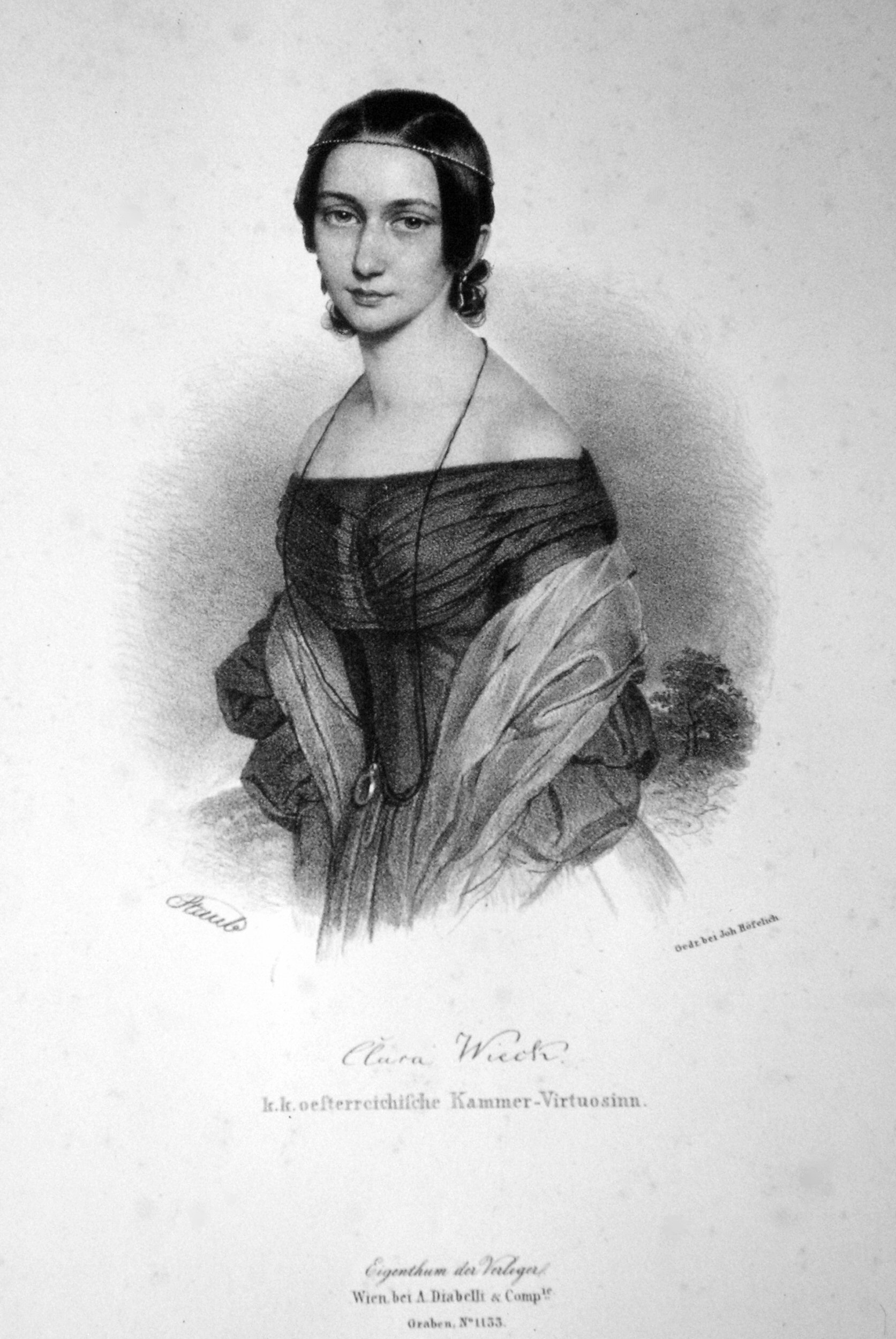Clara Schumann
 Clara Josephine Schumann (; ; née Wieck; 13 September 1819 – 20 May 1896) was a German pianist, composer, and piano teacher. Regarded as one of the most distinguished pianists of the Romantic era, she exerted her influence over the course of a 61-year concert career, changing the format and repertoire of the piano recital by lessening the importance of purely virtuosic works. She also composed solo piano pieces, a Piano Concerto, chamber music, choral pieces, and songs.
Clara Josephine Schumann (; ; née Wieck; 13 September 1819 – 20 May 1896) was a German pianist, composer, and piano teacher. Regarded as one of the most distinguished pianists of the Romantic era, she exerted her influence over the course of a 61-year concert career, changing the format and repertoire of the piano recital by lessening the importance of purely virtuosic works. She also composed solo piano pieces, a Piano Concerto, chamber music, choral pieces, and songs.She grew up in Leipzig, where both her father Friedrich Wieck and her mother Mariane were pianists and piano teachers. In addition, her mother was a singer. Clara was a child prodigy, and was trained by her father. She began touring at age eleven, and was successful in Paris and Vienna, among other cities. She married the composer Robert Schumann, on 12 September 1840, and the couple had eight children. Together, they encouraged Johannes Brahms and maintained a close relationship with him. She gave the public premieres of many works by her husband and by Brahms.
After Robert Schumann's early death, she continued her concert tours in Europe for decades, frequently with the violinist Joseph Joachim and other chamber musicians. Beginning in 1878, she was an influential piano educator at Dr. Hoch's Konservatorium in Frankfurt, where she attracted international students. She edited the publication of her husband's work. Schumann died in Frankfurt, but was buried in Bonn beside her husband.
Several films have focused on Schumann's life, the earliest being ''Träumerei'' (''Dreaming'') of 1944. A 2008 film, ''Geliebte Clara'' (''Beloved Clara''), was directed by Helma Sanders-Brahms. An image of Clara Schumann from an 1835 lithograph by Andreas Staub was featured on the 100 Deutsche Mark banknote from 1989 to 2002. Interest in her compositions began to revive in the late 20th century, and her 2019 bicentenary prompted new books and exhibitions. Provided by Wikipedia
-
1
